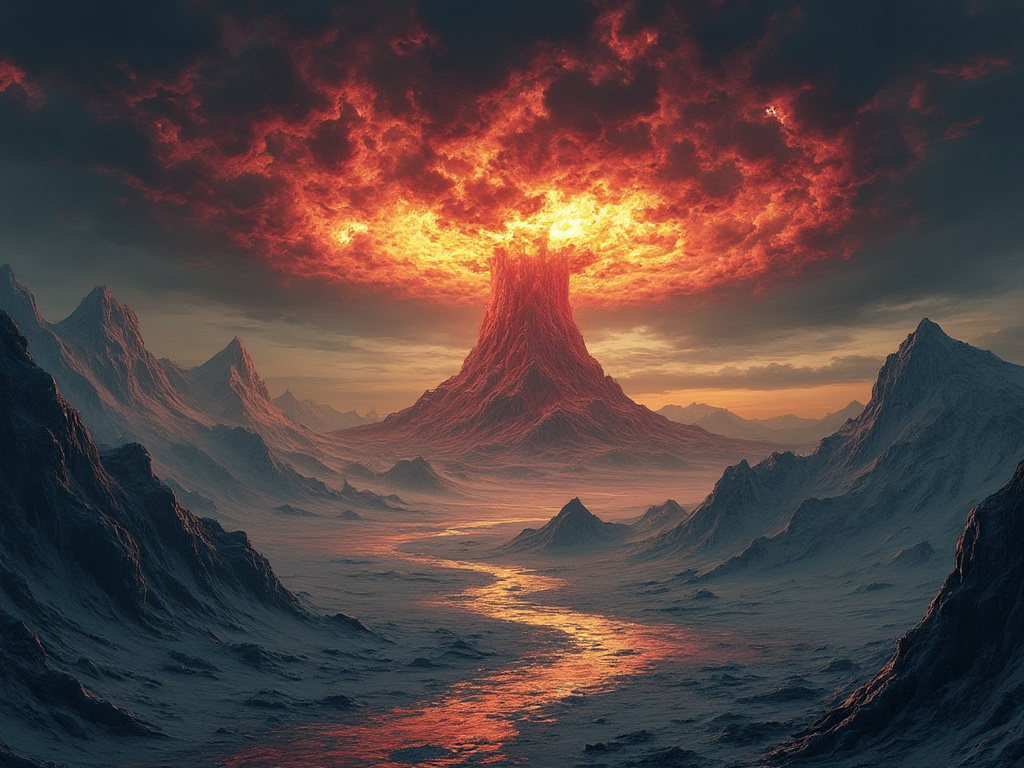Interpreting Ragnarok in a modern context where Surtr's sword represents a nuclear bomb introduces an intriguing blend of ancient mythology with contemporary apocalyptic fears. Here's how this interpretation could unfold:
Modern Interpretation of Ragnarok: Surtr's Sword as a Nuclear Bomb: In Norse mythology, Surtr, the fire giant, wields a flaming sword that is said to be brighter than the sun. If we interpret this as a nuclear bomb, Surtr could symbolize the unleashing of nuclear warfare. The brightness of his sword could represent the blinding flash of a nuclear explosion. Nuclear Winter as Fimbulwinter: Following a large-scale nuclear conflict, the phenomenon known as nuclear winter could occur. This is when soot from the fires caused by nuclear explosions rises into the atmosphere, blocking out sunlight. This prolonged period of cold and darkness would be akin to Fimbulwinter, the three successive winters without summer, causing widespread agricultural failure, famine, and societal collapse. Obfuscation of Sun, Moon, and Stars: The smoke, dust, and ash from nuclear detonations and subsequent fires would indeed block the sun, moon, and stars from view, paralleling the mythological event where Skoll and Hati catch and devour the celestial bodies. This would not only physically darken the sky but also symbolizes the loss of guidance and hope, much like in the myth. Moral and Societal Decay: Preceding Ragnarok, Norse myths speak of kinship bonds breaking and widespread conflict. This can be seen as analogous to the geopolitical tensions, ethical breakdowns, and perhaps even the internal societal strife that could precede or follow the use of nuclear weapons. The Wolves Skoll and Hati: These wolves could be metaphorically seen as the relentless progression of technology and warfare (Skoll) and the growing shadow of annihilation (Hati), both of which eventually lead to their inevitable, destructive conclusion. The End and Renewal: In mythology, after the destruction, the world is reborn; new life emerges from the ashes. This could be interpreted as humanity learning from its mistakes post-nuclear disaster, rebuilding society with new values, or perhaps the earth healing over time, with or without human presence. This modern interpretation serves as a cautionary tale about the destructive capabilities of nuclear weaponry, reflecting humanity's capacity for self-destruction and the potential for catastrophic environmental impact. It also underscores the theme of cyclic renewal, suggesting that even after the most devastating events, there might be a chance for rebirth or regeneration, though perhaps in a form very different from what we know today. This allegorical reading bridges ancient fears of the end times with contemporary anxieties about nuclear war and environmental collapse.
